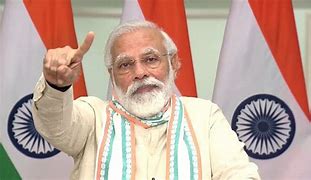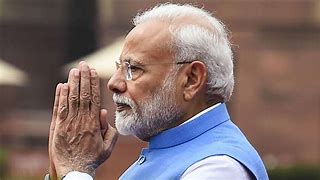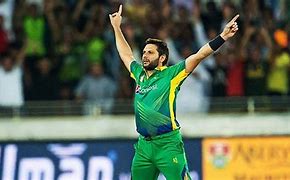Feature
Modi visit disrupts life in Chandigarh

Chandigarh: It is one regret and inquiry that the Chandigarh residents could certainly have done without.
It was Narendra Modi’s first ever visit – and that too for only four hours – to the City Beautiful after becoming the prime minister, but it led to closure of the city’s main cremation ground, forced ambulances carrying patients on longer detours to reach hospitals, shut schools, made the most busy roads inaccessible to the common man and even saw opposition Congress leaders cooling heels in police lock-ups.
A few families grieving for their near and dear ones were not even allowed to cremate their dead at the sector 25 cremation ground, forcing them to take the bodies either to neighbouring S.A.S. Nagar town in Punjab or Manimajra on city outskirts.
The reason? Modi addressed a public rally at a ground that lies next to the main cremation ground in sector 25 here.
“There was death of a young one in family. As we were making funeral arrangements, we were told that the cremation ground in sector 25 was locked out due to the PM’s visit. This is shocking! How can Modi and other authorities be so insensitive to the dead and their close ones? He preaches one thing and practices everything else,” Gurmeet Singh, a city resident whose friend passed away on Friday, told IANS.
The bereaved family finally took the body to adjoining S.A.S. Nagar for cremation.
The Chandigarh Police and local authorities showed no sympathy for those who needed immediate medical attention too.
To facilitate the prime minister’s smooth movement on city roads for the three events, even ambulances carrying patients were not spared. They were forced to take longer detours to ensure smooth passage for the PM’s motorcade of nearly 100 vehicles.
Ironically, Modi attended a convocation of the Post Graduate Institute of Medical Education and Research (PGIMER) and told doctors to be “compassionate” to patients. Outside the auditorium where he preached, Modi’s security paraphernalia ensured maximum restrictions on patients and their attendants.
That was not all.
Even before Modi arrived in the city, the Chandigarh Administration, in its own infinite wisdom, ordered nearly 200 schools to be closed on Friday. Even examinations in some institutions were postponed.
As Modi’s cavalcade zipped through the city roads, commuters, particularly on two-wheelers and bicycles, faced the maximum harassment in hot weather. Traffic was blocked at several points in the 114 square km union territory. The resultant traffic snarls made matters worse for motorists.
Modi, who lived in and around Chandigarh for a few years when he was a state-level BJP leader and used to move around on a scooter, told the gathering at his rally that he was quite familiar with the city and its people and could even see old comrades in the gathering. He added that he could not meet them due to his new responsibility (as PM) and the attached security detail.
As the common man suffered immensely in hosting Modi the prime minister, he offered a few lines of sympathy through his Twitter handle: “An inquiry will be held and responsibility will be fixed for the inconvenience caused to the people of Chandigarh.”
“The inconvenience caused to the citizens in Chandigarh, especially shutting of schools due to my visit, is regretted. It was totally avoidable.”
The fate of such inquiries are too well known to be even discussed.
Entertainment
Meghalaya Reserves Legalized Gambling and Sports Betting for Tourists

The State Scores Extra High on Gaming-Friendly Industry Index
Meghalaya scored 92.85 out of 100 possible points in a Gaming Industry Index and proved to be India’s most gaming-friendly state following its recent profound legislation changes over the field allowing land-based and online gaming, including games of chance, under a licensing regime.
The index by the UK India Business Council (UKIBC) uses a scale of 0 to 100 to measure the level of legalisation on gambling and betting achieved by a state based on the scores over a set of seven different games – lottery, horse racing, betting on sports, poker, rummy, casino and fantasy sports
Starting from February last year, Meghalaya became the third state in India’s northeast to legalise gambling and betting after Sikkim and Nagaland. After consultations with the UKIBC, the state proceeded with the adoption of the Meghalaya Regulation of Gaming Act, 2021 and the nullification of the Meghalaya Prevention of Gambling Act, 1970. Subsequently in December, the Meghalaya Regulation of Gaming Rules, 2021 were notified and came into force.
All for the Tourists
The move to legalise and license various forms of offline and online betting and gambling in Meghalaya is aimed at boosting tourism and creating jobs, and altogether raising taxation revenues for the northeastern state. At the same time, the opportunities to bet and gamble legally will be reserved only for tourists and visitors.
“We came out with a Gaming Act and subsequently framed the Regulation of Gaming Rules, 2021. The government will accordingly issue licenses to operate games of skill and chance, both online and offline,” said James P. K. Sangma, Meghalaya State Law and Taxation Minister speaking in the capital city of Shillong. “But the legalized gambling and gaming will only be for tourists and not residents of Meghalaya,” he continued.
To be allowed to play, tourists and people visiting the state for work or business purposes will have to prove their non-resident status by presenting appropriate documents, in a process similar to a bank KYC (Know Your Customer) procedure.
Meghalaya Reaches Out to a Vast Market
With 140 millions of people in India estimated to bet regularly on sports, and a total of 370 million desi bettors around prominent sporting events, as per data from one of the latest reports by Esse N Videri, Meghalaya is set to reach out and take a piece of a vast market.
Estimates on the financial value of India’s sports betting market, combined across all types of offline channels and online sports and cricket predictions and betting platforms, speak about amounts between $130 and $150 billion (roughly between ₹9.7 and ₹11.5 lakh crore).
Andhra Pradesh, Telangana and Delhi are shown to deliver the highest number of bettors and Meghalaya can count on substantial tourists flow from their betting circles. The sports betting communities of Karnataka, Maharashtra, Uttar Pradesh and Haryana are also not to be underestimated.
Among the sports, cricket is most popular, registering 68 percent of the total bet count analyzed by Esse N Videri. Football takes second position with 11 percent of the bets, followed by betting on FIFA at 7 percent and on eCricket at 5 percent. The last position in the Top 5 of popular sports for betting in India is taken by tennis with 3 percent of the bet count.
Local Citizens will Still have Their Teer Betting
Meghalaya residents will still be permitted to participate in teer betting over arrow-shooting results. Teer is a traditional method of gambling, somewhat similar to a lottery draw, and held under the rules of the Meghalaya Regulation of the Game of Arrow Shooting and the Sale of Teer Tickets Act, 2018.
Teer includes bettors wagering on the number of arrows that reach the target which is placed about 50 meters away from a team of 20 archers positioned in a semicircle.
The archers shoot volleys of arrows at the target for ten minutes, and players place their bets choosing a number between 0 and 99 trying to guess the last two digits of the number of arrows that successfully pierce the target.
If, for example, the number of hits is 256, anyone who has bet on 56 wins an amount eight times bigger than their wager.























